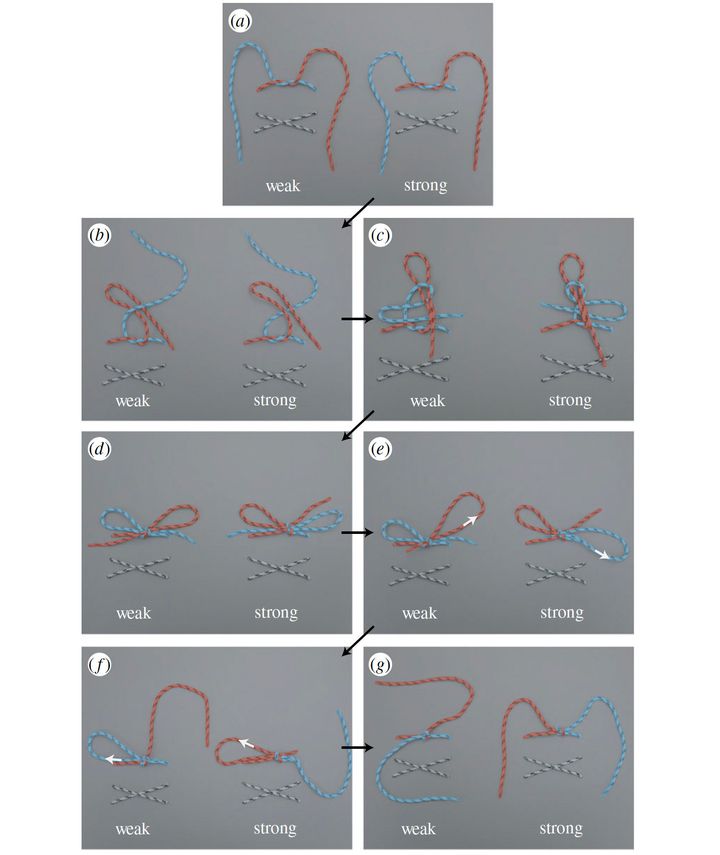We know all too well that few things are more embarrassing than tripping over your own laces – but that hardly makes knot tying worthy of scientific inquiry.
Mechanical engineers at UC Berkeley, however, contend that there are other grounds for studying the forces at play around our feet.
“When you talk about knotted structures, if you can start to understand the shoelace, then you can apply it to other things, like DNA or microstructures, that fail under dynamic forces,” said Christopher Daily-Diamond, the co-author of a major study that attempts to unravel the mystery.
To investigates why laces come undone seemingly randomly after hours of use, one of the researchers was filmed running on a treadmill.
During running, the impact of one foot striking the ground stretches and relaxes the knot. Once loosened, it’s vulnerable to the inertial forces of the swinging leg, which tugs at the ends of the laces, causing them to unravel.
People tend to tie their laces in one of two ways: either based on a strong square knot or a weak false knot, as demonstrated here:

Oliver O’Reilly, a Berkeley professor of mechanical engineering, said: “We were able to show that the weak knot will always fail and the strong knot will fail at a certain time scale, but we still do not understand why there’s a fundamental mechanical difference between those two knots.”
It’s hoped the latest research will help the scientists find out.